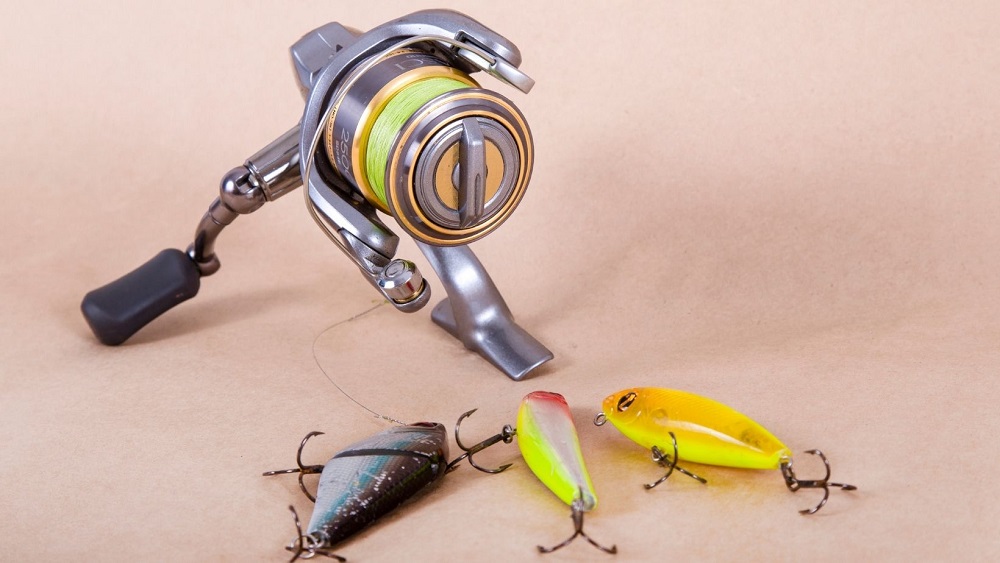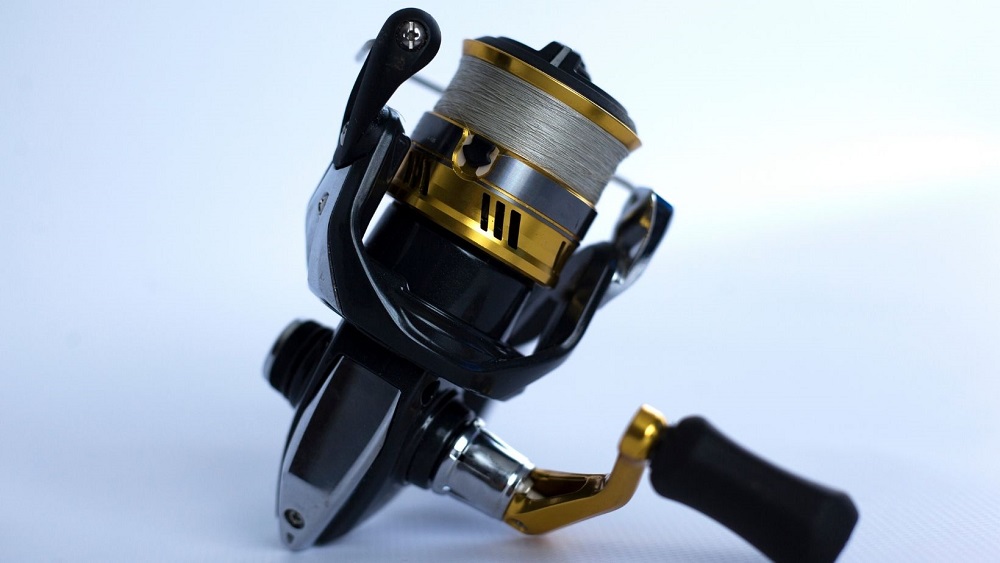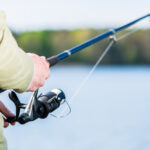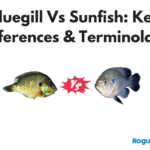Selecting the best spinning reel for your fishing requirements can be challenging, particularly for those who aren’t familiar with these types of reels and the different parts.
Understanding how each part contributes to the reel’s functionality will make selecting the most viable option easier. Investing in the best quality fishing gear will enhance your experience while allowing you to enjoy a successful fishing trip.

Below, we have identified the different parts of a spinning reel and the elements and factors you should look for when making your purchase.
What are the most important parts of a spinning reel?
Handle
The handle of the reel is very important. This component is used to retrieve the line once it has been cast, and this should be done in a smooth motion. Many reel handles are interchangeable and can be positioned on the right or left side of the unit to accommodate users with different hand orientations.
A larger handle provides you with more room to maintain a secure and sturdy grip to enhance your control of the line. The handle should be durable with the resistance to withstand use in different weather conditions. It should also be comfortable. Some will have rubber coatings that prevent your hands from slipping, and the softness of the material will prevent the onset of wrist fatigue or irritations.
The weight of the handle can also influence how quickly it responds to your instruction. Lighter reels tend to boast a quicker response time.
Body/ Frame
The body or frame reel refers to the same component, and this is the section of the reel that holds all of the internal components and other features together.
Typically, the body is composed of the gearbox, support arm, and foot, although some designs may incorporate more features. Metal tends to be the most common material used to construct the frame, and although plastic provides an option, it doesn’t possess the long-term durability of aluminum or graphite.
The body/frame of the reel is available in different size and shape variations, so it is important to make your selection accordingly.
Foot
The foot refers to the section between the rod and the reel. It is tightly positioned to ensure that both the rod and reel remain firm during casting and retrieval.
Although it typically tends to be made from the same material as the reel body, it tends to be positioned on its exterior.
Spool
The design and material composition of the spool will affect how well the reel performs. The spool is the section of the reel that holds the line.
If the spool produces too much friction, not only is it more susceptible to breaking, but it may influence how successful you are in retrieving the fish. The most common materials used to make the spool are aluminum and graphite, and each possesses their qualities.
While the former is stronger, the latter is later and the best choice for a spinning reel. When determining the quality of the spool, it is important to consider the weight, length, and type of line that you are going to be using. The specifications of the spool will state its suitability with lines of different dimensions. Poorly made spools can affect how smoothly the line runs off.
Line Roller
The line roller refers to the surface on which the line travels across as it is reeled in. Some will produce a great deal of friction, but if possible, this should be avoided as it can hinder the performance of the gear.
The line roller should allow the line to travel smoothly, ensuring that it doesn’t become stuck or damaged. The roller can also help eliminate any twists that have developed to make it easy to cast and retrieve.
Anti Reverse Mechanism
The anti-reverse mechanism prevents the line from traveling backward once it has been cast. It also engages the drag, although many models allow the angler to decide whether this feature is engaged or not.
The anti-reverse mechanism is particularly important when targeting larger and fiercer fish. They are more likely to put up a fight as it eliminates the risk of it tangling and breaking.
The ability to alter the functionality of this feature is great for catering to anglers with different levels of experience.
Drag Adjustment Knob
This feature is typically positioned on the front of the reel facing out at the spool line. On some models, it may be one button, and on others, it may be multiple buttons. By turning the dial, you can alter the friction and drag.
The line will be tightened by turning the adjustment knob clockwise, and by turning it counterclockwise, the drag will be loosened. Positioned near the reel handle, the drag adjustment knob tends to be easier to find and use.
Bail Arm
The bail arm is a semicircular-shaped metal arm that is positioned on the fixed spool.
This component picks up the line once it has been cast and helps to eliminate the backlash by encouraging smooth operation.
Seat
The reel seat refers to the component in which the foot is mounted too. The design of this element can differ slightly between brands and manufacturers.
Gears
The gears are highly influential in determining how smoothly the reel performs. The gear ratio identifies the number of times the spool rotates once the reel handle has been turned.
An effective gear system should also prevent the line from breaking. Thicker gears will be preferred when targeting fish prone to fighting because thinner gears will lack the strength required in this situation.
What To Look For When Buying A Reel

There are several features and factors that you will need to look for in your reel. Accounting for these factors will ensure that the reel performs well and accommodates your fishing requirements.
The Material Construction
Aluminum or graphite are the two most common materials that are used to construct a fishing reel. The material must be durable enough to endure frequent and intense use without deteriorating in quality quickly. While aluminum is a stronger and heavier material that will resist impact and damage, it will likely become rather tiresome to handle during lengthy fishing trips.
While graphite doesn’t possess the same tensile strength as aluminum, it is a lighter alternative that will be easier, more comfortable to handle, and is still fairly durable. When contemplating which material will be best suited to your needs, it is important to assess whether you want a reel that is stronger but heavier or one that is less durable but lighter.
The Weight
Lighter material will put less pressure on your wrist and forearm, whereas handling a heavier reel will result in the onset of wrist fatigue.
The weight of the reel is typically measured in ounces and will be stated in the product specifications. When browsing through the selection of reels available on the market, it is important to ensure that the weight caters to your preference and fishing needs.
The Gear Ratio
The gear ratio of a spinning reel is identified in two figures. The higher the first figure, the faster the reel is going to function. A reel with a 4:1 gear ratio will operate slower than a reel with a 6:1 ratio.
Those mentioned above will likely be too slow for most anglers, and a gear ratio in the range of 5:1 or 6:1 is likely to be preferred. A 5:1 gear ratio provides a viable middle-speed option.
The Environment
It is also important to consider the environment in which the reel is going to be used.
While some will be suitable for freshwater and saltwater fishing, others will be used in one or the other. This is because saltwater is rather harsh and corrosive, so a reel that hasn’t been made to endure these elements will become damaged much sooner.
The Drag System
The drag system applies pressure to the fish that have been hooked before distributing the line. A high-quality, smooth line is going to result in better performance. However, a poor drag system will result in potentially broken lines and fish that have managed to swim away from the grasp of the line.
There are two types of drag systems; a front drag system or a rear drag system. The former tends to be the most common type that is incorporated into spinning reels.
Final Thoughts
It can be difficult to narrow the selection of spinning reels from different manufacturers down to the most worthy option of your purchase.
Approaching the market with all the knowledge regarding the different parts of the reel and how they contribute to the functionality will be helpful. It’s also worth preparing yourself with the features you need to look for in a high-quality reel.





